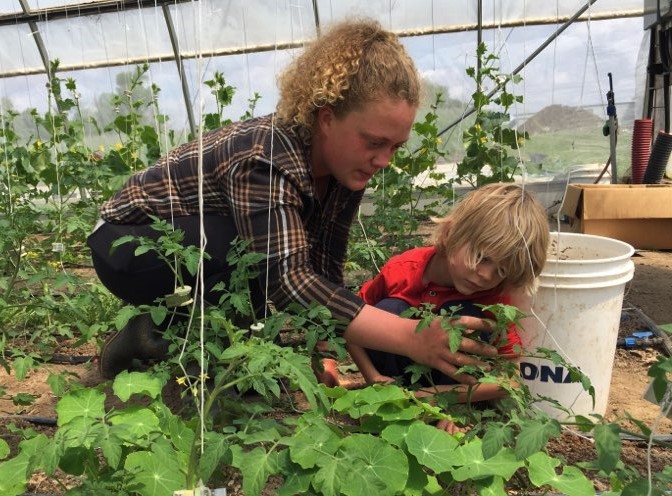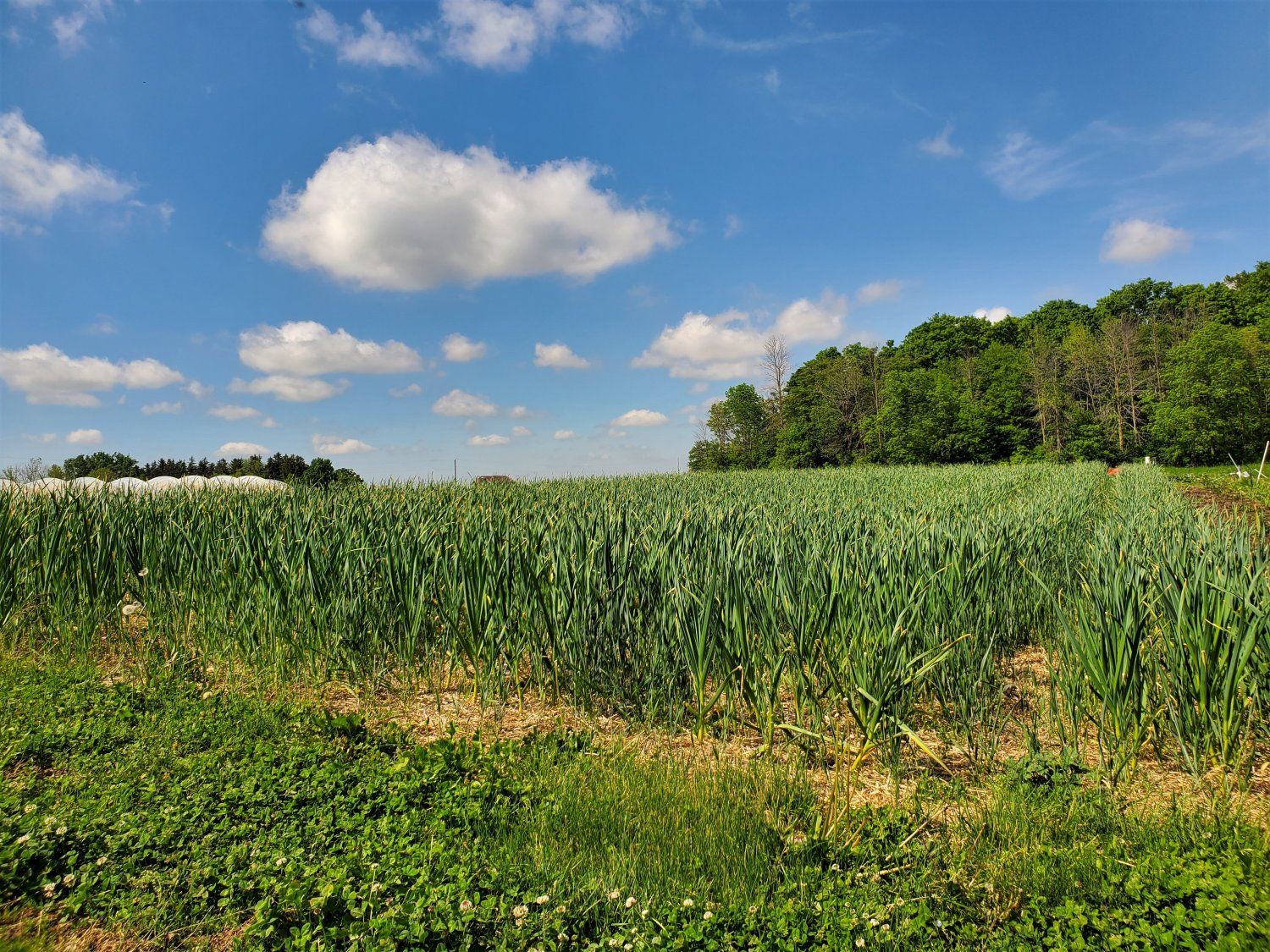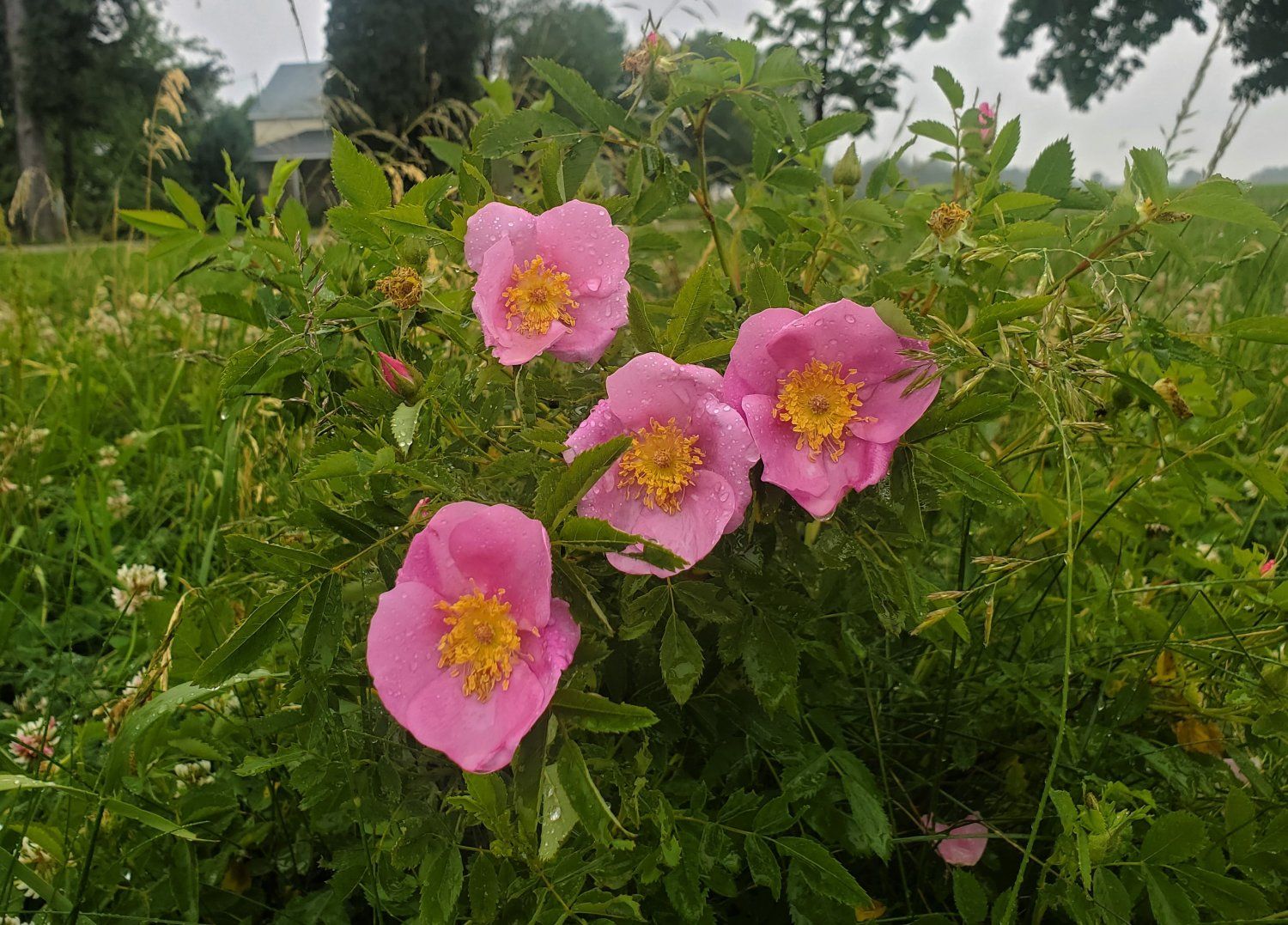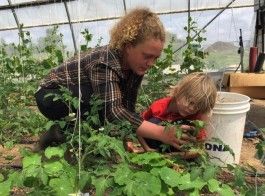June 17, 2021
The Lettuce Rejoice!
Firmly Rooted Farm's Newsletter for their Veggie Loving Farm-ily

Photo credit: Autumn Ducharme
On the Farm: A Trellising and Pruning How-To
Hello again my veggie loving friends,
This week has brought us a little rain, and a lot of heat. At times I felt as though I could water an entire field just with the sweat dripping off my brow. We have been subjecting ourselves to ungodly temperatures in the greenhouses to ensure our tomato, cucumber, and pepper plants are thriving. It's more than worth it; the pop of tomato, the crunch of cucumber, and the bite of pepper are sensations I dream of in the dead of winter. The cucumbers are leading the race and will be ready soon, but even hot crops cannot handle the heat sometimes. The shock of the sudden heatwave has caused the plants to abort a number of fruit, a process where the plant voluntarily terminates some fruiting bodies in order to conserve resources. We've also noticed the first signs of nutrient deficiency on the plants; browning tips and mottling on the leaves. This year, for the first time, we are taking tissue samples to be tested, which will tell us exactly what nutrients the plant is lacking. We are doing this along with taking soil samples. The soil samples will tell us what nutrients are available, and the tissue samples will tell us what the plant is actually accessing. In concert, sampling works as an excellent indicator of entire system health. To address the issue of nutrient deficiency, we are giving the plants a little boost with a foliar fertilizer spray of seaweed extract. Seaweed is high in trace elements, which the cucumber plants can easily absorb through their leaves.
The great majority of our work with tomatoes, cucumbers, and peppers involves pruning and trellising. Many of you bought a plant or two from our seedling sale, so I am going to provide you with a pruning and trellising how-to!
Pruning tomatoes is an important process, especially if you are growing indeterminant varieties. If you are unsure if you're tomato is determinant or indeterminant (aka bushing or vining), just do a quick Google search of the variety name and you'll likely be able to find information easily from a seed company website. Here is a great video on how to prune tomatoes for maximum yield and plant health. We prune tomatoes to ensure that the plant's energy is being best utilized for fruit production, to prevent disease by providing airflow, and to make growing and harvesting the fruit a more manageable process. We prune cucumbers for similar reasons. Here is an excellent video regarding the process of pruning cucumbers.
Along with pruning your tomatoes and cucumbers, it's ideal you trellis them as well. Vertical gardening maximizes the amount of space you have available and provides other benefits such as easy to harvest and clean fruit. There are countless trellising methods out there, and you will find numerous videos on YouTube. Feel free to dive down that rabbit hole into the wonderful world of trellising, but it can get a little overwhelming. Here is a video that mentions a number of trellising methods, and explains how to do the Flordia Basket Weave. We use the Florida Basket Weave for our determinant variety tomatoes, however, you can also use it for indeterminant varieties, you may just have to train your tomatoes to grow downwards once they become too tall. Many people are likely familiar with cages for tomatoes, but those are only really helpful if you are growing determinant varieties. If you would like a more permanent structure for your indeterminant tomatoes, I recommend cow panels. These are sturdy and easy to manage, just train your tomatoes to weave through the panel! Otherwise, you can build a conduit structure to which you can tie string, and train your indeterminant tomatoes to grow up the string. Here is a video explaining some creative ways to trellis cucumbers, along with some planting tips. I think this is a great video for showcasing how many different ways there are to trellis in a home garden, and how it all depends on what materials you have at your disposal. So be creative!
Whether to prune peppers or not is a contentious subject. You will find many arguments and answers on the internet, and sometimes it just depends on the type of pepper. Slow producing peppers like ghost peppers should likely not be pruned, otherwise, you may hinder its growth and reduce the amount of fruit it produces. However, many bell peppers, such as the ones we sold in our seedling sale, do appreciate pruning and trellising. Here is a video highlighting how to prune your bell peppers, which also shows a trellising method using string and clips.
If you have any questions, please feel free to shoot us an email, or explore some related videos from the YouTubers linked above. Many have great advice and creative problem-solving for growing food at home. With enough scouring of the internet, soon the algorithms will be answering all your questions before you even knew you had them!
Kitchen Corner
We have lots of kohlrabi to offer, otherwise known as a German turnip. Despite its nickname, it is not a root vegetable, however, like turnip, it belongs to the brassica genus and is another cultivar bred from wild cabbage: Brassica oleracea. If you didn't know, Brussel sprouts, kale, cabbage, broccoli, cauliflower, and many other brassicas all are cultivars of Brassica oleracea. What a dynamic plant, it's quite amazing how much genetic variety can be determined from one species of plant. Kohlrabi tastes similar to other brassicas once the bitter outer skin is peeled away, and can be enjoyed raw or roasted, stuffed, and creamed, or cooked in soups, stews, and stir-fries. The greens are also edible, which when small can be enjoyed in salads or sautéed when bigger. I've also cut kohlrabi into matchstick pieces and fermented in a brine with some dill and spices to enjoy as a nice funky pickle.
Kitchen Clean-Up
Just a reminder to Completely Rooted CSA pick-up folks, the pick-up time has now changed and will be from 1:30-4:00.
That’s all for now folks, happy eating until next time!
Farmer Erika




